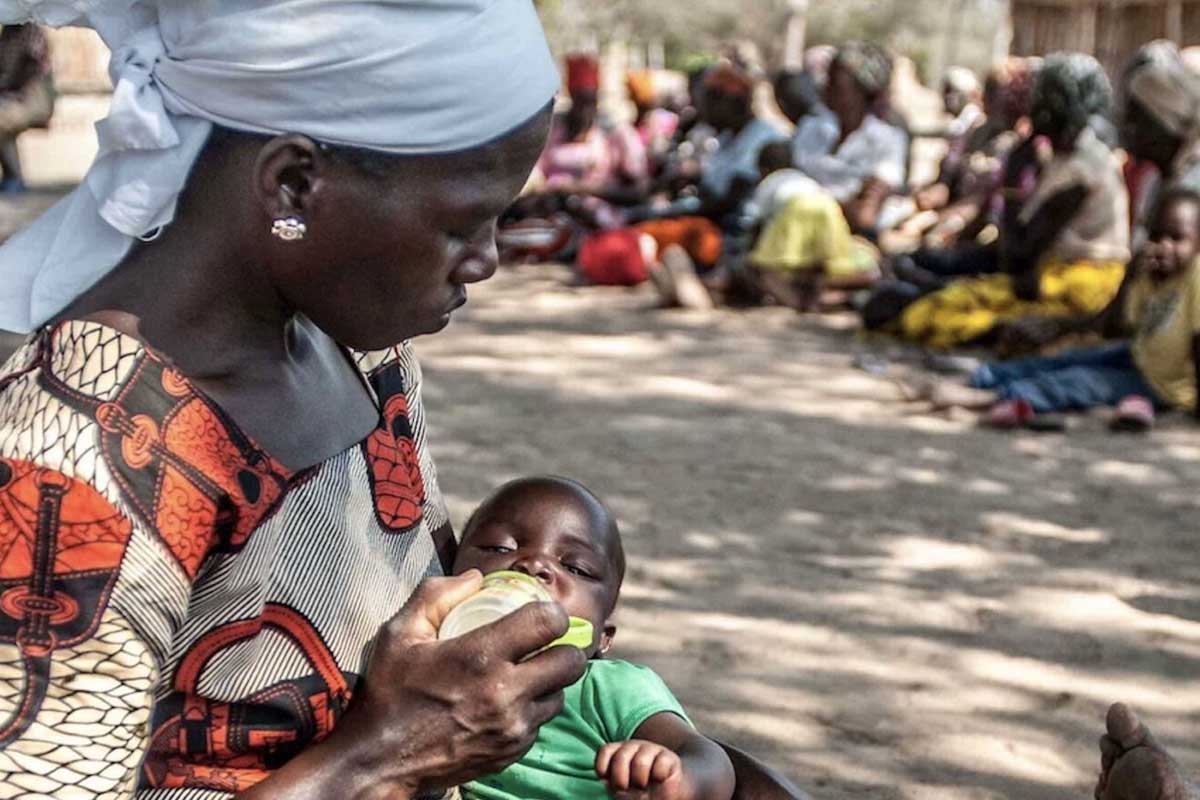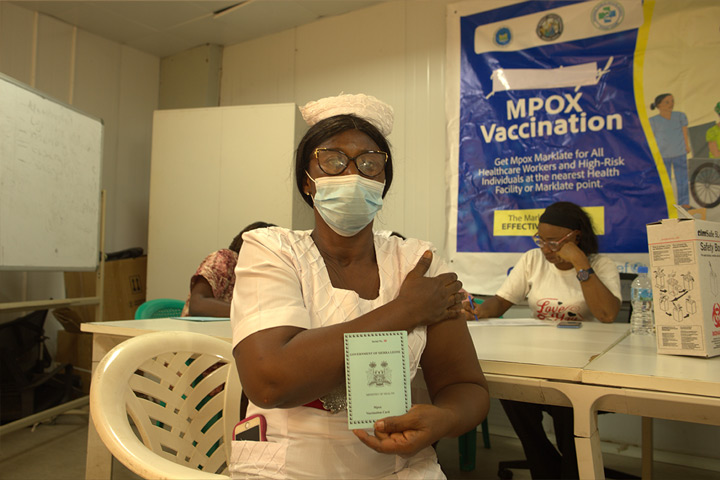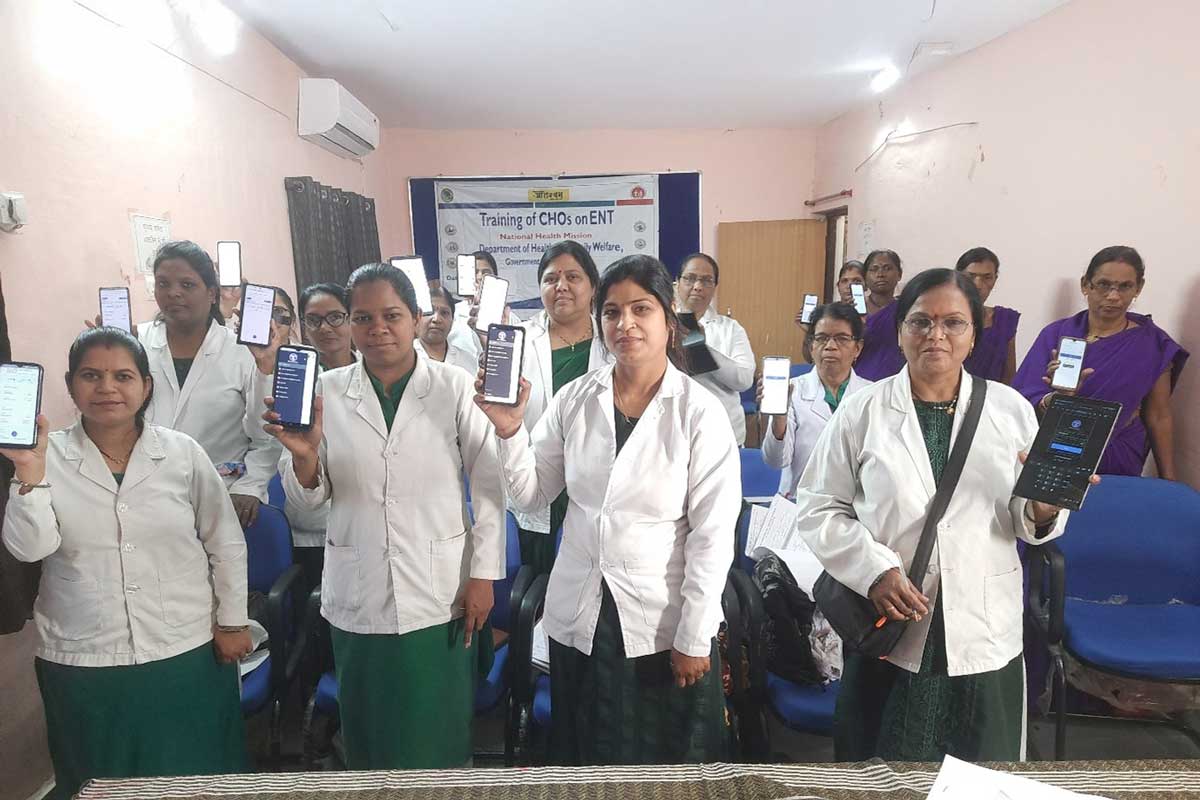How climate change is making it more likely that the food we eat will make us sick
A new study finds that climate change is affecting the distribution and spread of food-borne diseases.
- 21 August 2024
- 6 min read
- by Mongabay

- An increase in the number and severity of heatwaves, droughts, and heavy precipitation events are all expected to lead to a rise in food-borne diseases, hitting Africa and Asia particularly hard.
- Investing in research and innovation can provide valuable insights into the underlying mechanisms of climate change-pathogen interactions and novel solutions for mitigating effects.
- For example, the Cameroon National Climate Observatory, ONACC, already provides national sectors, such as agriculture, livestock, and health with forecast climate information translated into local languages to facilitate monitoring in the context of global warming.
Climate change threatens public health by affecting the distribution and spread of food-borne pathogens, according to a recent study by food scientists from Benha University in Egypt published in [Climatic Change]. Food-borne pathogens are microorganisms that can cause illness when consumed via food or water sources.
The authors found that changes in temperature and precipitation patterns, shifting consumer behavior, and altered distributions of food-borne pathogens increase exposure risk for humans and animals.
“This study aims to highlight the connections between climate change and public health, raise awareness, promote discussion on effective mitigation strategies, advocate for increased investment in research and the development of local expertise, and promote partnerships between African researchers and international organizations to share knowledge and resources,” Dr. Ahmed Alhussaini Hamad, one of the study’s authors, told Mongabay in an interview by email.
The World Health Organization estimates that 1 in 10 people fall ill every year because of eating contaminated food. Contaminated food has been identified as the cause of 600 million food-borne diseases and 420,000 deaths annually, according to the study. Africa alone contributes to 91 million cases of illness and 137,000 deaths annually—over a quarter of all deaths. Among these diseases, diarrheal diseases account for 70 % of the overall burden. The impact of climate change on diarrheal diseases is expected to be more significant in Asia and Africa, Hamad and colleagues state.

Climate change is also projected to contribute to a surge in the incidence of food-borne illnesses globally, according to the study. For example, an increase in the number and severity of heatwaves, droughts, and heavy precipitation events are all expected to lead to a rise in food-borne pathogens.
This news is especially worrisome for Africa. Low-income countries in Africa are often disproportionately affected by climate change due to their geographic locations, reliance on agriculture, and limited resources for adaptation and mitigation, according to Hamad.
For African countries, Hamad says, “rising numbers of food-borne illnesses can strain already overburdened health systems. And, food contamination can lead to significant financial losses in the agricultural sector.”
The Cameroon example
According to Hamad, five food-borne diseases—Salmonellosis, Campylobacteriosis, Listeriosis, cholera and Aflatoxin Poisoning have a link with climate change. For example, he says that variations in the water temperature and quality affect the vibrio cholerae-bacteria that causes cholera.
In Africa, Cameroon has been grappling with cholera in recent years. A study in Infectious Disease Monitoring indicates that “the absence of water channels in some cities of Cameroon and the presence of garbage everywhere have favored the multiplication of V. cholerae in the environment over time that triggered a new outbreak in 2018.” In July 2018, when the Cameroon government declared a cholera outbreak, 470 cases and 34 deaths were registered. Cameroon has reported 20,649 cases and 484 deaths cumulatively from January 1, 2022, to March 7, 2024.
Dr. Rene Ramses Meyong, a climatologist at the National Climate Change Observatory in Cameroon, told Mongabay that the link between climate change and food-borne diseases is hinged on the mechanisms by which climate affects the reproduction and propagation dynamics of pathogens whether bacteria, viruses, parasites, natural toxins, etc. The epidemiological profile of any disease can be modulated by the dynamics of climate parameters in the short, medium, or long term.
“The work of the observatory has revealed that, since at least 1950, climate disruption has been reflected at the local level by an increase in average temperatures across the five agro-ecological zones, instability in the start and end dates of the seasons, high spatial and temporal variability in rainfall, and an upsurge in extreme weather situations (floods, droughts, etc.). Assuming that the disturbances impact food production, processing, and storage techniques, it is reasonable to assume that a portion of the elevated risk of food-borne illness transmission throughout the nation’s five agroecological zones can be attributed to climate change,” the climatologist says.
The study on climate changes and foodborne pathogens suggests that changes in food production and trade can introduce new sources of contamination. Meyong says it’s realistic to assume climate change is raising the risk of food-borne illnesses in Cameroon given its impact across the country. The climatologist has also linked potential sources of contamination in Cameroon to the overuse of chemicals.
“To meet the growing demand on the consumer market, many actors are forced to use significantly more chemicals (pesticides, fertilizers, etc.) during the manufacturing process, contributing to the rise in anti-microbial resistance,” says Meyong, adding that “chemical exposure can also raise the danger of severe poisoning or the spread of chronic diseases like cancer.”
The climatologist expressed concern about the storage conditions of foodstuffs displayed in some Cameroon markets. “Poor display conditions for foodstuffs, coupled with unfavorable weather conditions, exacerbate the risk of contamination by food-borne bacteria like Vibrio cholerae.”
The study published in Nature in June 2024 recommends monitoring the impact of climate change on food-borne pathogens to develop strategies to mitigate its effects on human health and understand the science behind the link between climate change and food-borne diseases.
Meyong states that the climate observatory already provides national sectors, such as agriculture, livestock, and health with forecast climate information (climatological services) translated into local languages to facilitate monitoring in the context of global warming.
Mitigation strategies
By adopting climate-smart agriculture methods— such as integrating agronomic practices, and conservation agriculture, among others — the study by Egyptian scientists suggests farmers can reduce the impact of climate change on their crops and minimize the likelihood of foodborne pathogen contamination.
In addition, mitigation strategies are improving food safety protocols and regulations, enhancing surveillance programs, and investing in research to understand the relationship between climate change and foodborne illness could help mitigate the health impact.
Have you read?
The study further suggests investing in research and innovation that can provide valuable insights into the underlying mechanisms of climate change-pathogen interactions and novel solutions for mitigating these effects. This includes developing new technologies and tools for detecting, tracking, and managing food-borne pathogens in a changing environment.
“Little is known to date about the link between the dynamics of climate change, in the context of global warming,… and the incidence of food-borne diseases in Central Africa in general and in Cameroon in particular,” says Meyong. “This is still an area to be explored to provide decision-makers with evidence-based data.”
The study shows that understanding the complex interactions among food systems, pathogen populations, and climate variables is essential for formulating appropriate policies and readiness for public health emergencies, among other challenges.
“Safe food is crucial for maintaining food security and public health. And, empowering countries to develop targeted strategies to mitigate the impacts of climate change on food safety is crucial,” says Hamad.
Citation:
Awad, A. D., Masoud, A. H., Hamad, A. (2024). Climate changes and food-borne pathogens: the impact on human health and mitigation strategy. Climatic Change, 177:92. https://doi.org/10.1007/s10584-024-03748-9.









